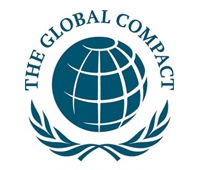There is quite a misunderstand online regarding this subject, I hope to clear meaning with some definition (from United Nations website) and example from Spain.
Corporate Social Responsibility (CSR) as defined by United Nation
• The Corporate Social Responsibility (CSR) is the voluntary commitment that companies make for social, economic and environmental improvement.
• The CSR wants to go beyond compliance with laws and regulations, assuming its respect and strict observance. The concept of administration and management encompasses a set of practices, strategies and business management systems which seek a new balance between economic, social and environmental dimensions.
• CSR is synonymous of transparency of investors, of good governance of listed companies, codes of ethics, initiatives of social actions and cultural patronage, among other initiatives. Social organizations develop their mission, establishing at the same time communication channels with the Administration and companies.
The reason why I choose to share info about Corporate Social Responsibility is the United Nations Association has found the Global Compact, in Spain, a strategic policy initiative for businesses that are committed to aligning their operations and strategies with ten universally accepted principles in the areas of human rights, labour, environment and anti-corruption. It is the largest voluntary corporate responsibility initiative in the world.
The Global Compact is a practical framework for the development, implementation, and disclosure of sustainability policies and practices, offering participants a wide spectrum of workstreams, management tools and resources — all designed to help advance sustainable business models and markets.
Read more about The Global Compact: https://www.unglobalcompact.org/aboutthegc/TheTenprinciples/index.html

How the Corporate Social Responsibility is applied?
Marco de Comunicacion is a Spanish agency of communication working with many corporate in differentes sectors, they also promote their clients’ corporate values and develop impactful Corporate Social Responsibility (CSR) plans. The clients are different, in some cases, CSR is part of the company’s corporate philosophy, while for others, CSR has even further-reaching implications.
The examples I like most:
MdC managed Spain’s first solidarity cooking marathon, an event held as part of a corporate social responsibility campaign for BEKO Home Appliances. The event was supported by Caritas and Madrid City Council, among others.

For a client such as Prologis, operating in the logistics, transportation and construction sectors, CSR has become a way to give back to the community. MdC designed a powerfulcommunications plan which reinforced Prologis’s green approach as a model for repairing the sector’s impact on the environment. The strategy implemented by MdC helped communicate Prologis’s use of recycled and renewable materials in its installations and positioned the company as one of the pioneers in sustainability in the Spanish logistics sector.
MdC created a communications plan for The Body Shop, the only ethically concerned beauty brand, to re-launch it to Spanish consumers after it was bought by L’Oreal. Thanks to the six-month PR campaign implemented by MdC, The Body Shop successfully re-positioned itself as an ethically concerned brand, reaching an audience of more than 115 million with 142 media appearances.
Resource:
1. http://www.anue.org/en/content/social-responsibility
2. http://www.marcodecomunicacion.com/en/servicios/corporate-social-responsibility/
Interested on Corporate Social Responsibility?
Stay tuned, the best is yet to come!
Sara
